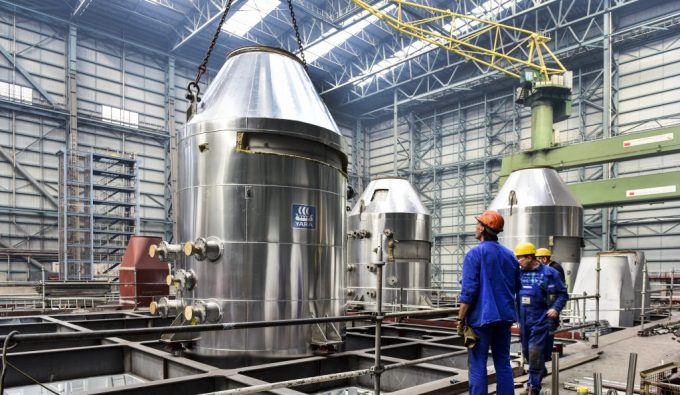Box lines hit by rising fuel costs as OPEC cuts supply
As global freight rates continue to fall, container shipping lines are being hit by a ...
UPS: MULTI-MILLION PENALTY FOR UNFAIR EARNINGS DISCLOSUREWTC: PUNISHEDVW: UNDER PRESSUREKNIN: APAC LEADERSHIP WATCHZIM: TAKING PROFITPEP: MINOR HOLDINGS CONSOLIDATIONDHL: GREEN DEALBA: WIND OF CHANGEMAERSK: BULLISH CALLXPO: HEDGE FUNDS ENGINEF: CHOPPING BOARDWTC: NEW RECORDZIM: BALANCE SHEET IN CHECKZIM: SURGING
UPS: MULTI-MILLION PENALTY FOR UNFAIR EARNINGS DISCLOSUREWTC: PUNISHEDVW: UNDER PRESSUREKNIN: APAC LEADERSHIP WATCHZIM: TAKING PROFITPEP: MINOR HOLDINGS CONSOLIDATIONDHL: GREEN DEALBA: WIND OF CHANGEMAERSK: BULLISH CALLXPO: HEDGE FUNDS ENGINEF: CHOPPING BOARDWTC: NEW RECORDZIM: BALANCE SHEET IN CHECKZIM: SURGING

Vessels using heavy fuel oil scrubber systems will have a “positive” effect on global CO2 emissions, according to a new report.
Norwegian research organisation Sintef claims a combination of high-sulphur fuel oil (HSFO) and an exhaust gas cleaning system (EGCS) represents the best means of meeting the needs of shipping and hitting global greenhouse gas reduction targets.
One of the report’s authors, Elizabeth Lindstad, told the Clean Shipping Alliance (CSA) that two-stroke engines with exhaust gas recirculation and scrubbers represent the most cost-effective way of meeting both the IMO’s Tier 3 NOx rules and low-sulphur fuel cap, IMO 2020, coming into force on 1 January.
“With new modern refineries set up to convert crude oil into higher-priced products, HSFO will, from 2020, be delivered from existing refineries where its share of energy consumption can be considered to be next to nothing,” said Dr Lindstad.
“The explanation is that heavy bunker oil coming from the refinery is ‘bottom of the barrel’. If we acknowledge the lower energy consumption in delivering HSFO and deduct refining we get 9-10g of CO2 equivalent for HSFO, rather than 13-15g of CO2 for low-sulphur fuel oil (LSFO).”
Efforts to curb greenhouse gas emissions in shipping are being spearheaded by IMO 2020; however, the scheme has received pushback from an industry voicing numerous concerns. Last month, The Loadstar reported that “safety concerns” were now being cited to back a call for a grace period of “permitted noncompliance” with IMO 2020, with Indonesia announcing it would allow vessels to continue to burn 3.5% sulphur content fuel within its coastal waters.
The Asian state claimed this was due to concerns about the threat of increased consumer goods prices, and other countries are reportedly considering similar options as the deadline for compliance looms.
There is much to do for ships not already fitted with exhaust gas cleaning scrubber systems, which allow the vessels to continue to consume HFO in all but the SECA regions of the world.
In practice, shipowners are unlikely to want to begin a switchover to the LSFO until around two months before IMO 2020, due to the higher cost of compliant fuels, leaving little time to address any issues from the blended fuels and vessel performance.
Comment on this article
Ian Adams
August 14, 2019 at 8:27 pmThe statement “Efforts to curb greenhouse gas emissions in shipping are being spearheaded by IMO 2020;” is completely inaccurate. The revision of MARPOL Annex VI is about reducing Sulfur emissions not greenhouse gases the two issues are separate.